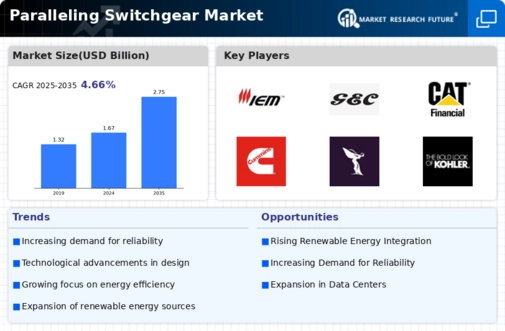Market Analysis
In-depth Analysis of Paralleling Switchgear Market Industry Landscape
The Paralleling Switchgear Market is influenced by various factors that collectively shape its growth and dynamics. One of the primary drivers of this market is the increasing demand for reliable and efficient power distribution solutions. Paralleling switchgear enables the parallel operation of multiple generators, providing a seamless and synchronized power supply. The adoption of paralleling switchgear systems has increased as industries and infrastructure projects require uninterrupted power driven by the need for reliable and scalable electrical distribution.
Government regulations and standards play a pivotal role in shaping the Paralleling Switchgear Market. Regulatory bodies enforce guidelines to ensure safety, reliability, and efficiency of power distribution systems. Therefore, compliance with these regulations influences whether or not industries are able to adopt paralleling switchgear solutions meeting stringent standards that provide secure power supplies.
Technological advances within the Power Distribution Sector have significant bearing on the Paralleling Switchgear Market.Within this context modernization through enhanced control systems; communication technologies such as smart grid; monitoring capabilities with respect to failure prediction contributes towards improved functionality of paralleling switches. Introduction of advanced functionalities such as intelligent load management, remote monitoring among others in this case allows customers’ needs being met much faster thus enhancing revenue expansion.
Infrastructure development along with growing electricity demand shapes up the Paralleling Switch Gear Market.As cities expand their boundaries industrial facilities grow while demand for electricity escalates making it necessary to have dependable scalable paralelling switchgears.The introduction of these platforms ensures efficient sharing out loads as well as better electricity distribution hence answering problems related to increasing power consumption in diverse sectors.
The competitive landscape and the presence of key players contribute significantly to the overall dynamics of the Paralleling Switchgear Market. This leads to increased research and development investments by manufacturers who are competing against each other thereby resulting in more refined paralleling switchgear solutions. This in turn brings collaborations and partnerships across the industry affecting market trends plus enabling innovation centered on needs inherent in changing electricity distribution environment.











Leave a Comment